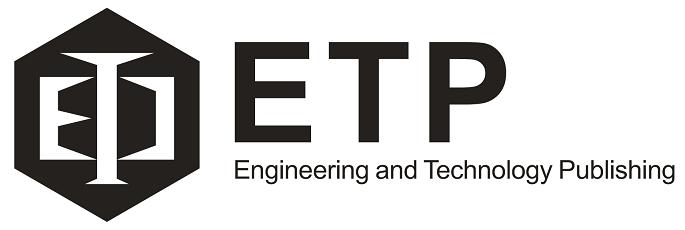The Application of Response Surface Methodology for Optimization of Tetracycline Determination Using Natural Reagent from Diplazium esculentum (Retz.) Sw.
Kanyarak Prasertboonyai1
Chayut Bunterngchit2
1.Faculty of Science, Energy and Environment, King Mongkut’s University of Technology North Bangkok, Rayong Campus, Rayong, Thailand
2.Division of Industrial and Logistics Engineering Technology, Faculty of Engineering and Technology, King Mongkut’s University of Technology North Bangkok, Rayong Campus, Rayong, Thailand
2.Division of Industrial and Logistics Engineering Technology, Faculty of Engineering and Technology, King Mongkut’s University of Technology North Bangkok, Rayong Campus, Rayong, Thailand
Abstract—This research aims to optimize tetracycline determination for pharmaceutical samples using iron(III) contained in Diplazium esculentum (Retz.) Sw. (D. esculentum) extraction. The method was based on the complex formed between tetracycline and iron(III), characterized by an absorption maximum at 430 nm using UV-Visible spectrophotometry. From the statistical data analysis by Response Surface Methodology (RMS), The Box-Behnken design was used for optimizing pH, volume of natural reagents and reaction time that affected the tetracycline determination. The results show that, the model fitted well (R2 = 99.79%). The optimum condition obtained from the equation were as follows: pH, 5; volume of natural reagent, 2.00 mL at any time. In addition, reaction time was not statistically significant. Comparing the sensitivity of the complex formed between tetracycline and iron(III) from the equation to the real experiment, it was found that they were nearly equal which indicate that RSM is an appropriate method to optimize tetracycline determination. Under the optimum conditions, a linear calibration curve was obtained over the range of 1.00–20.00 mg L−1. Limit of detection (defined as 3σ) was 0.22 mg L-1 and limit of quantification (defined as 10σ) was 2.15 mg L-1. The relative standard deviation of 3.43% for determining 10.00 mg L−1 of tetracycline (n=11) are obtained. The recommended method has been applied to the quantitation of tetracycline in pharmaceutical samples.
Index Terms—tetracycline, Diplazium esculentum (Retz.) Sw., Response Surface Methodology
Index Terms—tetracycline, Diplazium esculentum (Retz.) Sw., Response Surface Methodology
Cite:Kanyarak Prasertboonyai and Chayut Bunterngchit, "The Application of Response Surface Methodology for Optimization of Tetracycline Determination Using Natural Reagent from Diplazium esculentum (Retz.) Sw.," International Journal of Pharma Medicine and Biological Sciences, Vol. 8, No. 4, pp. 118-122, October 2019. doi: 10.18178/ijpmbs.8.4.118-122
Previous paper:First page
Next paper:Sappan (Caesalpinia sappan) Seeds in the Control of Cockroach (Periplenata americana)
Next paper:Sappan (Caesalpinia sappan) Seeds in the Control of Cockroach (Periplenata americana)
